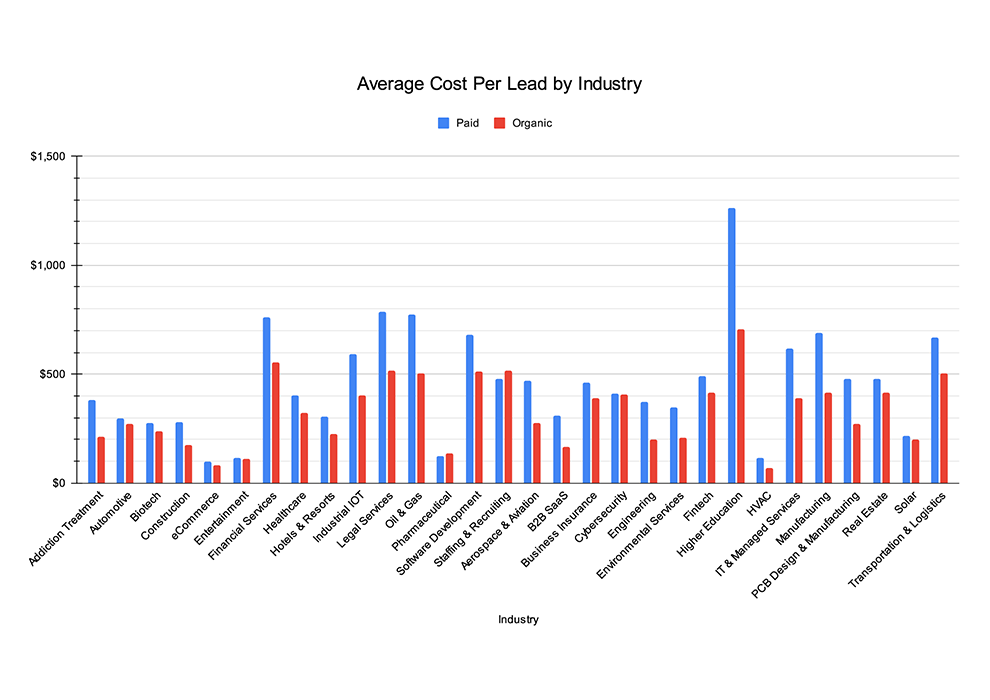Average Cost Per Lead by Industry – 2024

The world of marketing is full of acronyms, and CPL (Cost Per Lead) is a crucial one. It represents the investment you make to acquire a potential customer interested in your product or service. But here's the catch: CPL can vary significantly depending on your industry.
Industry Matters: The Cost Factor
Imagine the complex products and lengthy sales cycles of the technology sector. Naturally, acquiring a qualified lead in this industry might cost more compared to the e-commerce world, where attracting potential customers can be easier. This translates to a higher CPL for tech and a lower one for e-commerce.
Understanding the Range
While specific figures can be valuable, industry trends paint a clearer picture. Here's a breakdown of typical CPL ranges across different sectors:
- High CPL: Industries like software and financial services might see a CPL range of $150-$400.
- Mid-Range CPL: Education and healthcare often fall within a $100-$250 CPL range.
- Low CPL: Travel and e-commerce sectors typically experience a CPL range of $25-$100.
Quality Over Quantity: The True Focus
Remember, the lowest CPL isn't always the golden ticket. Your ideal scenario is acquiring high-quality leads at a reasonable cost. Think about it: a qualified lead, nurtured by a nurturing sales team, holds more value and has a higher conversion potential compared to a lead generated through cold calls.
The Takeaway: Targeted Investment is Key
By tracking both CPL and lead quality for each channel, you can strategically allocate your resources. This ensures you attract leads with high lifetime value, build customer loyalty, and empower your sales team to achieve better conversion rates.